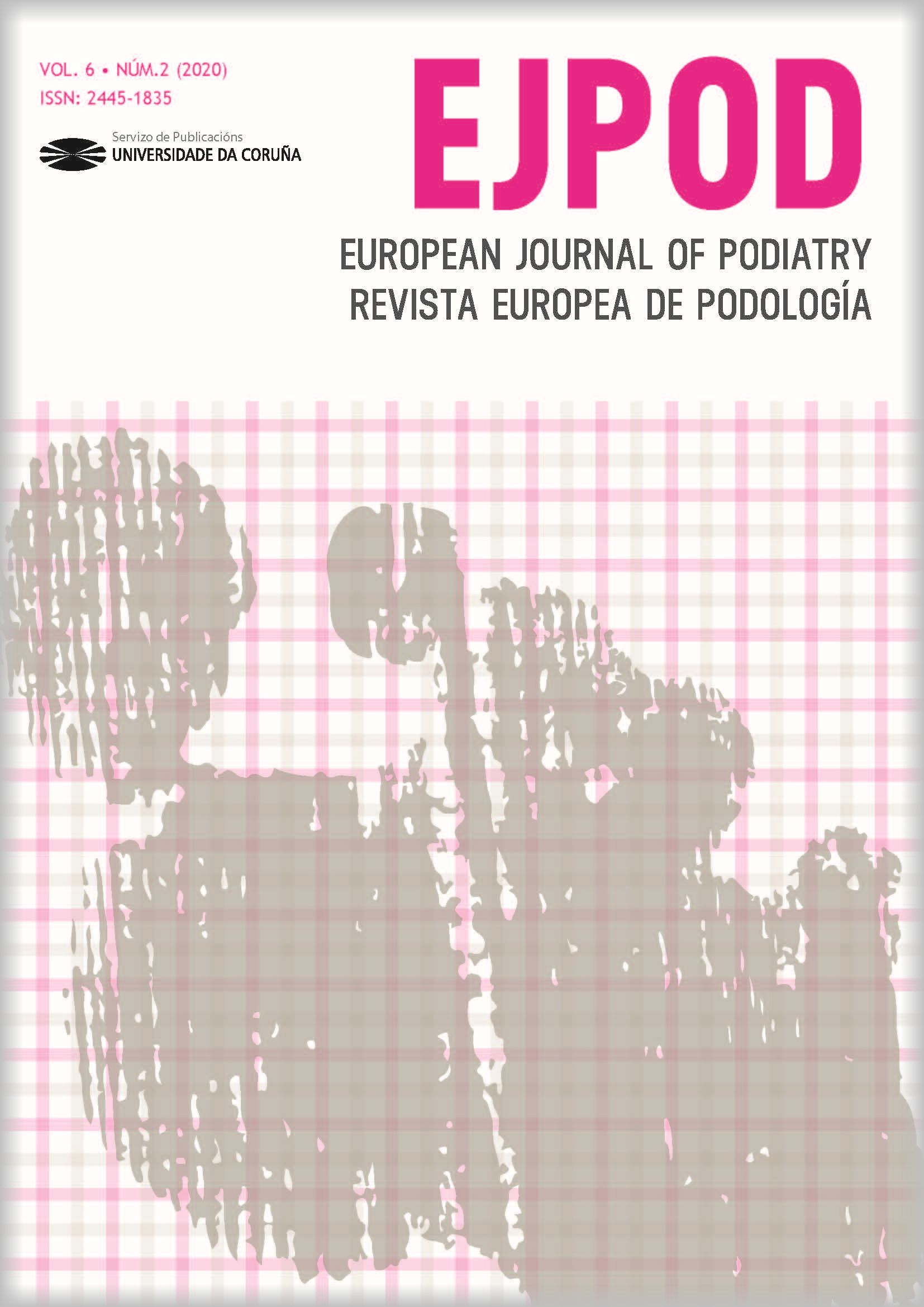Efecto de una intervención fisioterapéutica sobre la cinemática de la rodilla en niñas con anteversión femoral
Contenido principal del artículo
DOI:
https://doi.org/10.17979/ejpod.2020.6.2.6417Resumen
Objetivos: El objetivo del presente estudio fue determinar el efecto de un programa de acondicionamiento físico de 12 semanas, sobre la patología de anteversión femoral en niñas de seis años, a través de la medición de los rangos de movimiento de las rodillas durante el ciclo de marcha, antes y después de la intervensión. Siete niñas de seis años de edad con anteversión femoral participaron en el estudio.
Material y Métodos: Primero, se evaluó la marcha de las niñas con la ayuda de un sistema de cámaras infrarrojas y marcadores reflejantes. Posterior a la evaluación de la marcha de los participantes, se continuo con el proceso de intervención fisioterapéutica. Una vez transcurridas las 12 semanas de la intervención fisioterapéutica, se procedió a evaluar nuevamente la marcha para determinar el efecto de la intervención.
Resultados: El análisis t-test de muestras pareadas mostró una diferencia significativa en la disminución del rango de movimiento de la rodilla derecha posterior a la intervención, entre el 50% y 81% del ciclo de marcha (p-value<0.05). La rodilla izquierda mostró una diferencia significativa posterior al tratamiento, entre el 50% y 76% del ciclo de marcha (p-value<0.05).
Conclusiones: El tratamiento fisioterapéutico de rehabilitación generó una disminución significativa del rango de movimiento de ambas rodillas en la etapa de oscilación.
Palabras clave:
Detalles del artículo
Referencias
Jacquemier M, Glard Y, Pomero V, Viehweger E, Jouve JL, Bollini G. Rotational profile of the lower limb in 1319 healthy children. Gait Posture. 2008;28(2):187-193. doi: https://doi.org/10.1016/j.gaitpost.2007.11.011
Larson DE. Sitting Posture of Children. JAMA J Am Med Assoc. 1976;235(11):1106. doi: https://doi.org/10.1001/jama.1976.03260370016009
Serrano RF, Vergara Amador E, Correa Posada JR, Molano Torres AC, Guevara OA. Desarrollo angular y rotacional de los miembros inferiores en escolares entre 3 y 10 años. Estudio de dos poblaciones diferentes. Rev Fac Med. 2012;6(3):199-206.
Conejero Casares J, Torres R. Problemas ortopédicos. Rev Form Contin la Soc Española Med la Adolesc. 2018;6(2):66-77.
Staheli LT, Corbett M, Wyss C, King H. Lower-extremity rotational problems in children. Normal values to guide management. J Bone Jt Surg - Ser A. 1985;67(1):39-47. doi: https://doi.org/10.2106/00004623-198567010-00006
Staheli LT. Rotational problems in children. J Bone Jt Surg. 1993;75(6):939-949.
Cerda A. L. Evaluación del paciente con trastorno de la marcha. Rev Hosp Clín Univ Chile. 2010;21(4):326-336.
Accadbled F, Ibnoulkhatib A, Cahuzac J-P. Anomalías rotacionales de los miembros inferiores en la infancia. EMC - Apar Locomot. 2015;48(4):1-13. https://doi.org/10.1016/S1286-935X(15)74985-3
Celestre PC, Bowen RE. Correction of angular deformities in children. Curr Orthop Pract. 2009;20(6):641-647. doi: https://doi.org/10.1097/bco.0b013e3181bbc4c3
Friend L, Widmann RF. Advances in management of limb length discrepancy and lower limb deformity. Curr Opin Pediatr. 2008;20(1):46-51. doi: https://doi.org/10.1097/mop.0b013e3282f35eeb
Calzadilla Moreira V, Castillo García I, Blanco Estrada J, González Martínez E. Desviaciones torsionales de los miembros inferiores en niños y adolescentes. Rev Cuba Med Gen Integr. 2002;18(5):355-361.
Staheli LT, Lippert F, Denotter P. Femoral anteversion and physical performance in adolescent and adult life. Clin Orthop Relat Res. 1977;Nov-Dec(129):213-216. doi: https://doi.org/10.1097/00003086-197711000-00028


